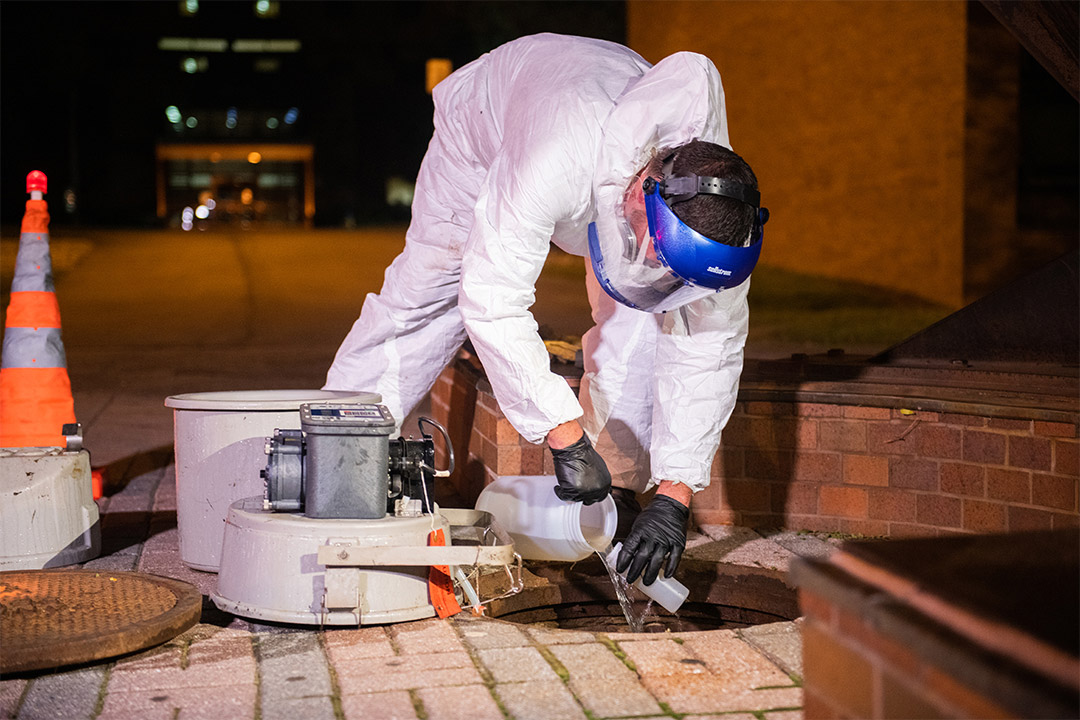Wastewater surveillance provides RIT another tool in the COVID-19 prevention toolbox
Gabrielle Plucknette-DeVito
RIT tests wastewater in the residence halls and on-campus apartments for viral RNA twice per week in 16 locations on campus and aims to expand to 20.
RIT turned some heads over the summer when it announced it would begin testing wastewater on campus for traces of COVID-19, but the method has proven to be an important piece of intelligence for the university to combat the spread of coronavirus.
RIT has been testing wastewater in the residence halls and on-campus apartments for viral RNA twice per week since Aug. 5, which covers nearly 6,500 individuals. People infected with coronavirus shed the virus in their feces before they begin displaying symptoms, so testing wastewater provides an early indicator that can help mitigate the spread of the virus. If officials detect a spike, that allows them to take action and test individuals in a targeted area in order to identify whether people have become infected and need to be isolated.
“If we receive a positive signal, we look at the trends,” said Enid Cardinal, senior advisor to the president for strategic planning and sustainability. “Now that we have previous data, we’re looking not only at what it says today, we’re looking at what it said yesterday or last week. How do these numbers compare to those of previous sample days? And what do we know about the population in that building? Have any of them been released from isolation, have any of them previously tested positive? And then we compare that against what the sample is telling us to make a determination.”
Several times so far, officials have seen small spikes in particular residence halls and have then conducted follow-up testing with residents and employees. In early September, it helped identify an individual who was positive in Nathaniel Rochester Hall who health officials were able to isolate and then quarantine the people they came in contact with.
As time has progressed, RIT officials have learned more about the complexities of analyzing the data from wastewater tests. Faculty who are experts in quantitative modeling are providing guidance to help decision-makers better understand the probability of where an infected individual might be.
“What we do with the data now is very different than what we might have done with the data on Aug. 19,” said Dr. Wendy Gelbard, RIT associate vice president for Wellness. “That’s because we were starting fresh where we knew people were coming in with no illness because of the negative test we required on arrival. And now, that’s not so true because we know that we have some people that have had COVID-19, they’ve been in isolation, they’ve been released back to their living areas on campus and they’re still shedding virus but they’re no longer infectious. So, they’re going to add to the wastewater.”
RIT launched the project with 15 sampling locations and is adding more to further refine its testing results. The university has already added one additional composite sampler and hopes to add four more as soon as the supply chain catches up.
And Gelbard emphasized that while wastewater testing is a helpful tool, the most important preventative measures are for individuals to follow the three Ws—wash your hands, wear a mask, and watch your distance.









